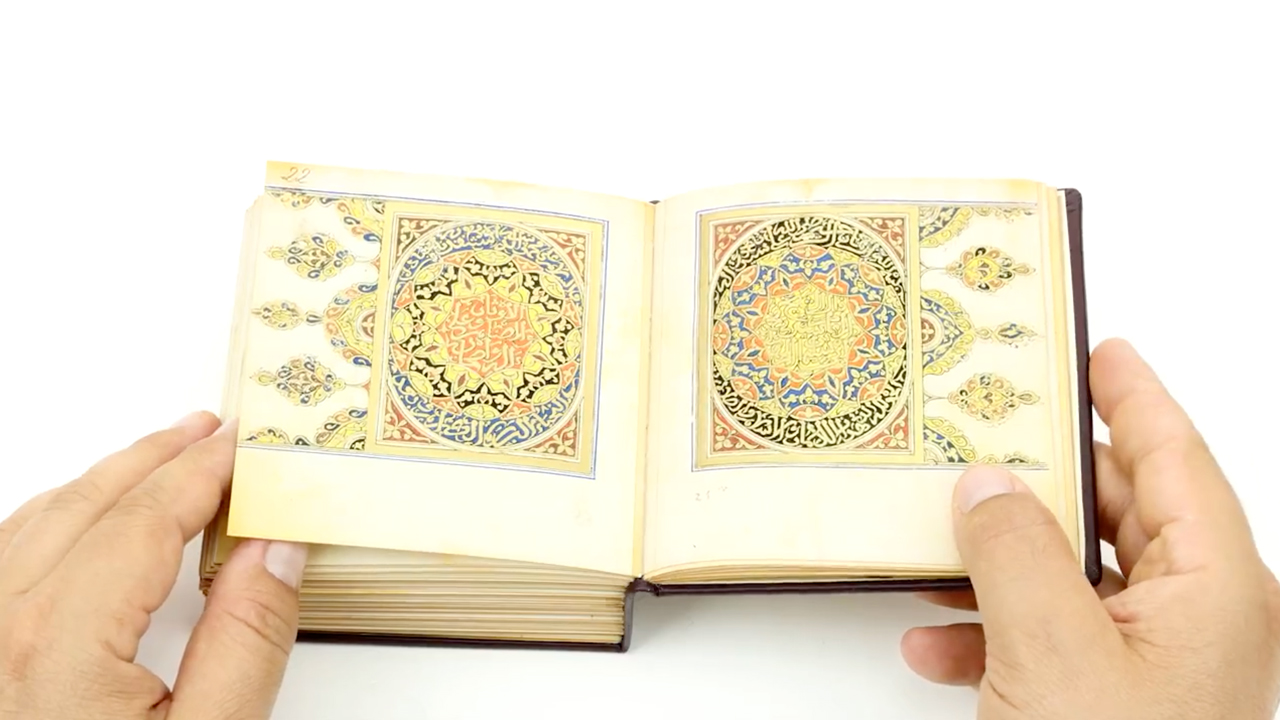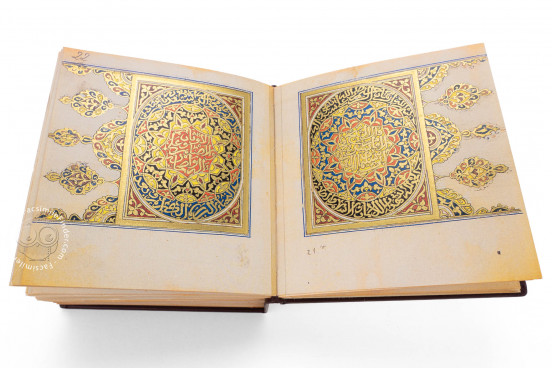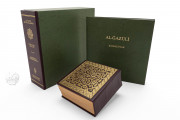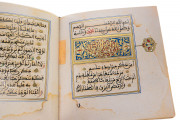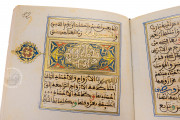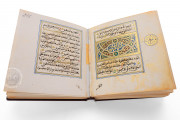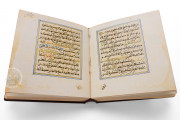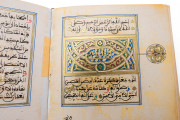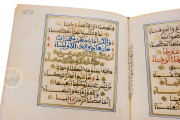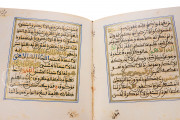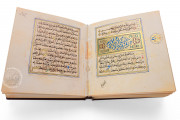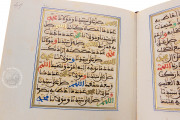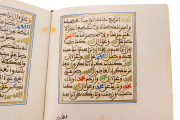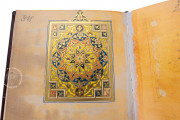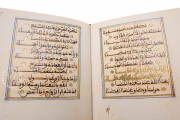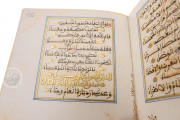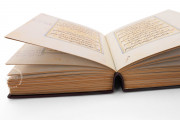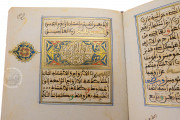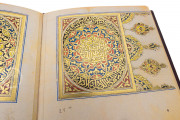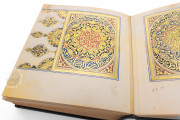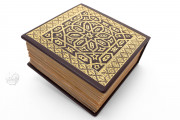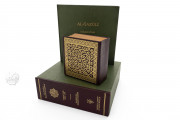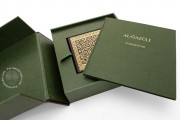The Guide to Goodness manuscript is an elaborately decorated miscellany of Islamic blessings, prayers, and poems. Its first and longest text is Dala'il Al Khayrat by Muhammad ibn Slayman al-Jazuli. Likely produced in the mid-seventeenth century in North Africa, the manuscript is written in a late Western Maghrebi script in black, red, gold, and blue and embellished with ornamented rosettes, carpet pages, and blue and gold borders. While little is known about the book’s origins, it is one of the best preserved examples of North African book arts.
The Dala'il Al Khayrat is one of the most frequently copied and widely read Arabic texts of religious content, specifically focusing on instructions for charity.
Muhammad ibn Slayman al-Jazuli and His Instructions for Charity
Muhammad ibn Slayman al-Jazuli, or Al-Gazuli, hailed from the Berber lineage of Gazula in the Moroccan city of Sus, where he was born and raised. He commenced his studies in his homeland but later journeyed to Fez, where he enrolled in the Madrasat as-Saffarin and authored his most renowned mystical work, the Dala’il al-Hayrat.
The Instructions for Charity is distinguished by its unique style. It is composed in rhythmic prose, characterized by the recurring repetition of parts of sentences, creating a noticeable cadence. One gets the impression that the book was crafted for a specific recitation purpose, which appears to have been the author's intent, as he utilizes repetitions to 'facilitate the reader in memorization.'
To this day, this prayer book is still recited in unison on weekends or religious festivities, starting softly and gradually intensifying until reaching a climax in the final verses. The continued usage of the Dala'il Al Khayrat and the proliferation of numerous copies of the prayer book attest to its immense popularity.
Virtually every library in the Orient and Europe possesses one or more versions of this work. Many affluent Muslims have commissioned splendid copies of the manuscript. One of the most exquisite examples is the Codex in Vienna, believed to have been owned by a tribal leader in Gambia or Mauritania.
Colorful Script and Decorations
The well-preserved prayer book contains an Arabic text written in a late Western Maghrebi script. The calligraphy is captivating, characterized not only by its precise execution but also by the use of colored inks: black, gold, red, green, and blue. Each title block on the text pages is adorned with gold and blue borders.
Additionally, there are numerous ornamental pages featuring geometric and floral motifs, artistic arabesques intertwined in a variety of colors. The distinctive writing and decoration style of the prayer book suggest the work of a skilled artist who has created one of the most beautiful examples of North African book art.
We have 1 facsimile edition of the manuscript "Dala'il Al Khayrat: Guide to Goodness": Al-Gazuli: Hinweisungen zur Wohltätigkeit facsimile edition, published by Akademische Druck- u. Verlagsanstalt (ADEVA), 1987
Request Info / Price
